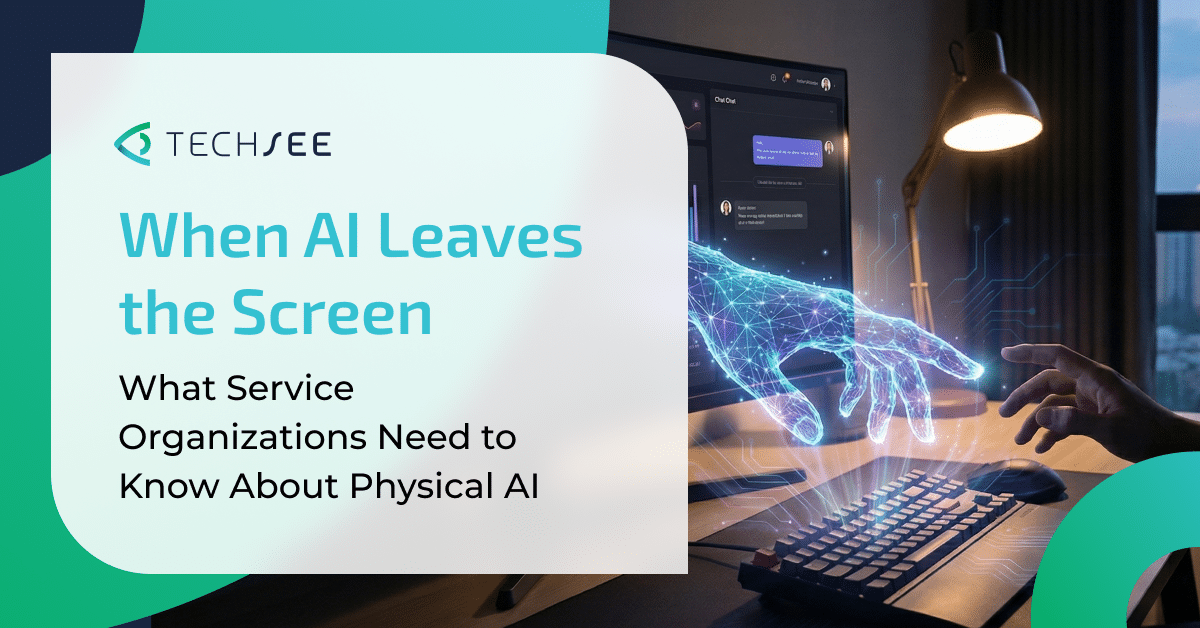What is Agentic AI?
Agentic AI is a form of artificial intelligence that autonomously performs tasks and makes decisions based on its cognitive capabilities. It goes beyond the reactive nature of traditional AI models by dynamically learning, adapting, and acting based on real-time input. In customer experience (CX) and service environments, Agentic AI is particularly transformative, as it enables intelligent, personalized interactions that improve the speed and quality of issue resolution. For example, Sophie AI, a prominent Agentic AI platform, exemplifies this by autonomously handling complex customer queries with precision and adaptability. Typically, agentic AI applications are referred to as AI Agents.
The Role of Multimodality in Agentic AI for CX
Multimodality is a cornerstone of Agentic AI, particularly in customer service. It enhances the AI’s ability to interpret and respond to a wide variety of customer inputs—text, voice, images, and even video. In CX and service use cases, multimodality allows Agentic AI to fully comprehend customer issues and deliver more effective solutions.
For instance, in technical troubleshooting or onboarding, the AI can analyze a customer’s verbal descriptions of an issue while simultaneously interpreting visual inputs like photos or video feeds of the device. This provides the AI with a more comprehensive understanding, enabling it to deliver quicker, more accurate resolutions.
This multimodal capability is invaluable in CX and service for tasks such as:
- Device Setup: Providing step-by-step visual and verbal guidance for setting up new products.
- Onboarding: Helping customers navigate new systems with tailored support based on their behavior and questions.
- Technical Troubleshooting: Diagnosing and resolving complex technical issues by interpreting a combination of textual descriptions, visual evidence (such as a photo of an error message), and real-time diagnostics.
Cognitive Capabilities of Agentic AI: The Role of AI Memory
A defining feature of Agentic AI is its cognitive abilities, particularly its capacity to utilize different types of memory—Semantic, Episodic, and Procedural Memory—to deliver a higher level of intelligence and adaptability. In CX and service automation, these cognitive layers are critical for handling multifaceted customer interactions and providing seamless, personalized support.
- Semantic Memory: This stores factual information, such as product details, troubleshooting steps, or knowledge of common issues. In a customer service context, Semantic Memory allows the AI to access and apply specific knowledge to resolve routine queries quickly.
- Episodic Memory: Episodic Memory enables Agentic AI to recall past customer interactions. This is particularly valuable for providing personalized support, as it allows the AI to refer to previous conversations and understand the customer’s unique situation or recurring problems. For example, suppose a customer contacts support for a second time. In that case, the AI can use Episodic Memory to recall the details of the prior interaction, ensuring continuity and minimizing the need for customers to repeat themselves.
- Procedural Memory: Procedural Memory enables the AI to learn and refine processes over time, such as handling recurring technical issues or guiding customers through similar troubleshooting steps. This is key to automating complex service workflows, as the AI continuously improves its efficiency and accuracy in resolving tasks.
By integrating these cognitive layers, Agentic AI can reason, infer, and adapt its responses, making it more capable of handling complex service queries autonomously. This is particularly valuable for service-oriented use cases like troubleshooting and product onboarding, where the ability to recall past interactions or apply learned processes dramatically improves customer satisfaction.
Agentic AI vs. Generative AI in CX
While both Agentic AI and Generative AI play important roles in customer service, they serve different functions:
- Generative AI excels in creating content such as text, images, or code based on patterns from large datasets. It can be useful in generating responses or content, but it lacks the autonomy and decision-making capabilities needed for complex customer service environments.
- Agentic AI goes further by autonomously making decisions and taking action in real-time, applying cognitive reasoning to solve customer problems. For instance, in a technical troubleshooting scenario, Agentic AI can decide the most appropriate course of action based on multimodal inputs, while a Generative AI might only suggest possible solutions based on pre-learned patterns.
Agentic AI’s ability to integrate multimodal inputs and cognitive reasoning makes it a more robust solution for CX and service environments, where problem-solving, decision-making, and autonomy are essential.
Measuring the Success of Agentic AI in Service: Key KPIs
In CX and service automation, measuring the success of Agentic AI is critical to understanding its impact on both operational efficiency and customer satisfaction. The following key performance indicators (KPIs) are essential for evaluating the performance of Agentic AI:
- Customer Satisfaction (CSAT): CSAT measures customer feedback after an interaction with the AI, providing insight into how satisfied customers are with the service they received. A high CSAT score indicates that the AI is resolving customer issues effectively and providing a positive experience.
- Net Promoter Score (NPS): NPS gauges customer loyalty by asking how likely customers are to recommend the service. Agentic AI that delivers quick, accurate, and personalized support can improve NPS by providing a frictionless service experience.
- First Contact Resolution (FCR): FCR measures the percentage of customer queries resolved on the first interaction without requiring follow-ups or escalations to human agents. High FCR rates reflect the AI’s ability to handle complex queries autonomously, improving customer satisfaction and reducing operational costs.
- Average Handling Time (AHT): AHT tracks the time it takes for the AI to resolve a customer issue. Lower AHT indicates quicker resolutions, leading to higher customer satisfaction and more efficient service delivery.
- Escalation Rate: This KPI measures how often the AI escalates issues to human agents. A low escalation rate suggests that the AI is capable of resolving complex queries independently, reducing the need for human intervention.
- Accuracy of Solutions: Accuracy reflects the quality of the AI’s problem-solving capabilities. Ensuring that the AI provides correct solutions without errors is critical in maintaining customer trust and avoiding repeated interactions.
- Task Completion Rate: Task Completion Rate measures how often the AI successfully completes the tasks it has been assigned, such as guiding a customer through a product setup or resolving a technical issue. A high completion rate demonstrates the AI’s effectiveness and reliability in service environments.
By tracking these KPIs, businesses can measure the tangible benefits of Agentic AI in CX and service automation, such as reduced operational costs, improved customer satisfaction, and more efficient service processes.
The Future of Agentic AI in CX
The future of Agentic AI in customer service is bright, potentially revolutionizing how businesses interact with their customers. Platforms like Sophie AI already demonstrate the value of combining cognitive reasoning with multimodal inputs to provide autonomous, high-quality support. As businesses increasingly adopt Agentic AI, we expect significant improvements in customer satisfaction, reduced service costs, and more streamlined service operations.
By leveraging the cognitive capabilities of Agentic AI—particularly its use of Semantic, Episodic, and Procedural Memory— to deliver multimodal AI experiences, companies can ensure that customers receive personalized, intelligent support that adapts to their needs. As Agentic AI continues to evolve, its impact on CX and service environments will only grow, delivering even greater value through more autonomous, intelligent, and context-aware interactions.





